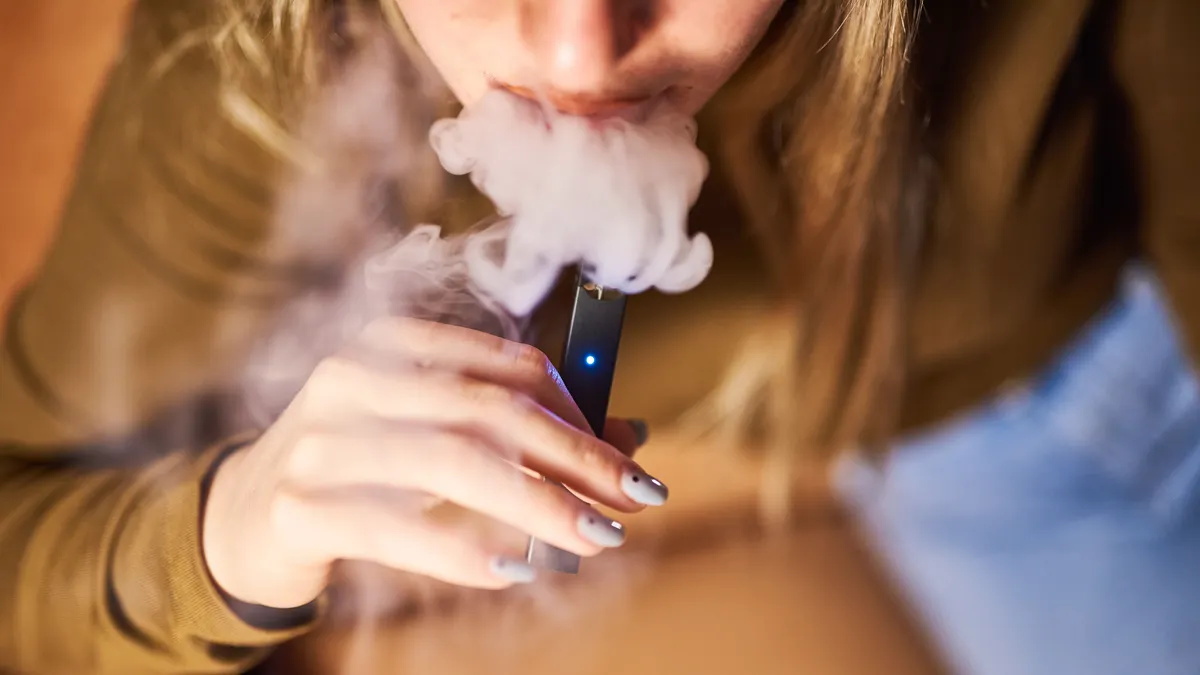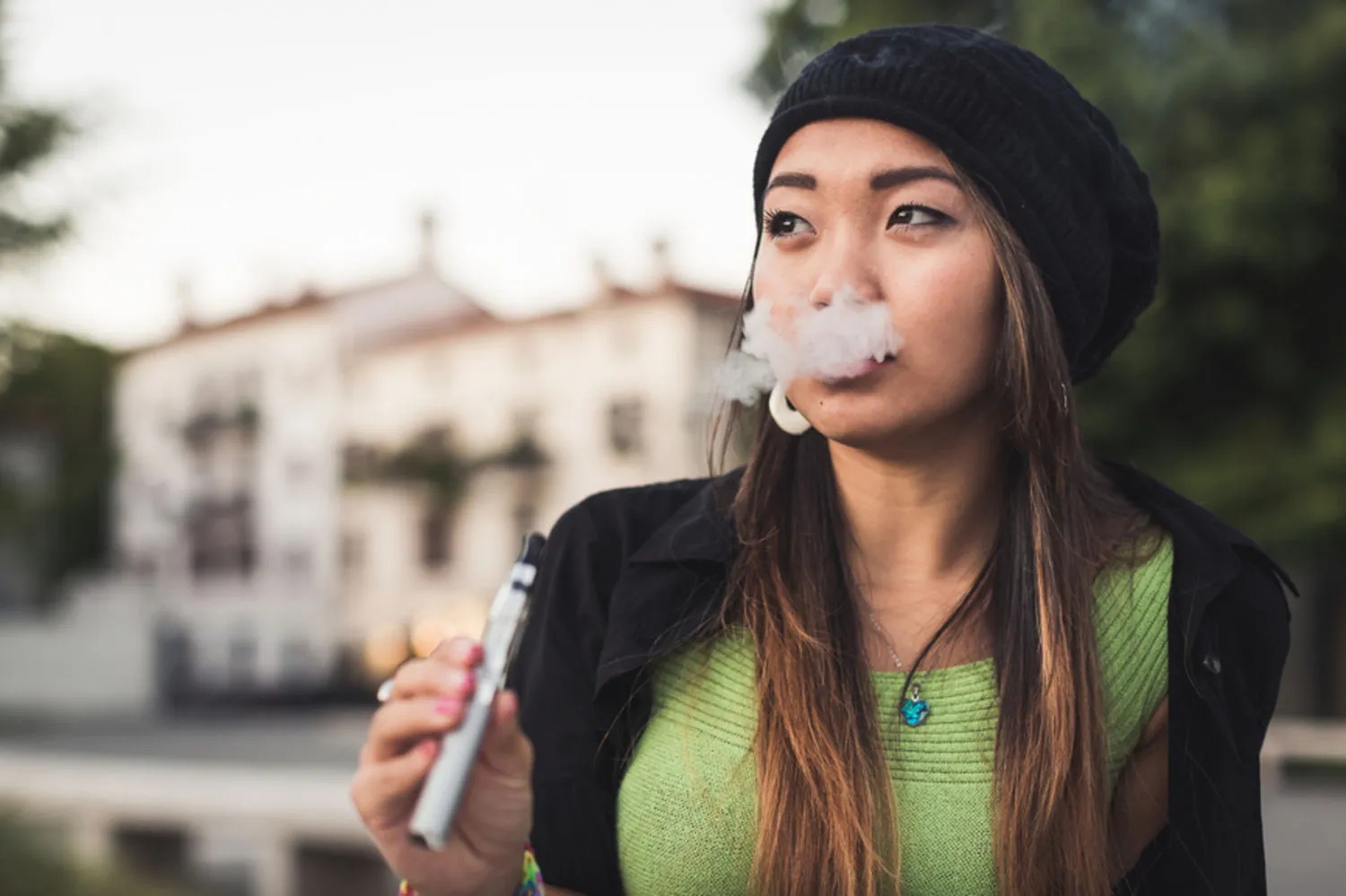WARNING: This product contains nicotine. Nicotine is an addictive chemical.
First things first, let’s talk about what a vape actually is. Imagine a futuristic peace pipe combined with your old science lab’s beaker, and voila, you’ve got a vape! These devices heat a liquid—known as e-liquid or vape juice—into a vapor that you then inhale. This vapor can contain nicotine, flavorings, and other chemicals. Some vapes look like sleek gadgets out of a sci-fi movie, while others are more discreet, resembling USB drives.
But wait, there’s more! The vape juice isn’t just any old liquid; it’s a concoction of propylene glycol (PG), vegetable glycerin (VG), nicotine, and flavorings. PG and VG sound like stuff from a chemistry set, but they help create the vapor and give it body. The flavors range from classic tobacco to bubblegum and even bacon (yes, you read that right). So, if you’ve ever dreamt of smoking your breakfast, vaping might be the closest you’ll get!

Alright, let’s get to the juicy part—are vapes bad for you? It’s a clouded issue, pun intended. On one side, you’ve got folks who swear by vapes as a safer alternative to smoking traditional cigarettes. After all, you’re not inhaling tar or carbon monoxide. On the flip side, some researchers raise their eyebrows higher than a skeptic at a magic show.
One of the big concerns is nicotine. While not as nasty as some cigarette chemicals, nicotine is still highly addictive. It’s like that clingy ex who just won’t let go. Plus, for young folks, nicotine can mess with brain development faster than a squirrel on a caffeine high. And then there are the mysterious “other chemicals” in vape juice. Some studies suggest these can lead to lung issues, though the jury’s still out on how severe these problems might be.
Ever heard of popcorn lung? No, it’s not a condition from binge-watching too many movies. It’s a real thing, and it’s linked to a chemical called diacetyl, which has been found in some vape juices. Popcorn lung (or bronchiolitis obliterans, if you want to sound fancy) damages the tiny airways in your lungs, making it hard to breathe. Yikes!
But here’s a plot twist—most reputable vape juice manufacturers have ditched diacetyl. So, unless you’re buying your vape juice from a shady back-alley dealer, you might be in the clear. However, that doesn’t mean you’re entirely safe. There are still concerns about other chemicals in the mix, and long-term effects are as mysterious as Bigfoot sightings.

Let’s talk about the social side of vaping. Is it the cool new thing, or just another fad that’ll go the way of the dodo? Some people think vaping looks cooler than a penguin in sunglasses. It’s got that high-tech vibe, and you can impress your friends with smoke rings and other tricks. Plus, there’s no lingering cigarette smell—just the sweet scent of your vape flavor, be it fruity, minty, or something downright wacky.
But beware, my cloud-chasing friend. Not everyone is thrilled by your vapor show. Some folks find it just as annoying as traditional smoking, especially when they’re walking through a fog of cotton candy-scented mist. And let’s not forget those anti-vaping laws popping up faster than you can say “bubblegum blast.” So, while you might think you’re the epitome of cool, others might see you as just blowing hot air.
So, are vapes bad for you? The answer is as hazy as the clouds they produce. On one hand, they’re probably less harmful than traditional cigarettes. You’re dodging some of the worst chemicals found in smoke. On the other hand, vaping isn’t without risks—especially if you’re addicted to nicotine or using dubious vape juices.
If you’re vaping to quit smoking, it might be a step in the right direction. But if you’re starting fresh with vapes, thinking they’re harmless, you might want to think again. Like with any good story, the truth lies somewhere in the middle. So, whether you’re puffing away like a mini steam engine or just curious about the craze, keep your wits about you. And always remember: where there’s smoke—or vapor—there’s fire, or at least a heated debate.
So, you’ve stumbled upon the great vape debate, huh? Wondering if those little electronic clouds are friends or foes? Picture yourself as a suave dragon, puffing out rings of mist, or maybe you’re worried about the health impacts of vaping. Well, buckle up, buttercup! We’re embarking on a whimsical journey to answer the burning question: are vapes bad for you? From explaining what vapes are—those futuristic gadgets that turn liquids into flavorful clouds—to diving into the health controversies surrounding them, this guide will navigate through the foggy details. We’ll explore everything from the chemicals involved to the infamous “popcorn lung” scare, and even the social perceptions of vaping. Whether it’s seen as the cool new trend or just another annoying habit, we’ll cover it all with a dash of humor and a relaxed tone. So, sit back, relax, and enjoy this lighthearted guide through the world of vaping and its many mysteries.
1. What are vapes and how do they work?
Vapes, or e-cigarettes, are electronic devices that heat a liquid—known as e-liquid or vape juice—into a vapor, which users then inhale. The vape juice typically contains a mixture of propylene glycol (PG), vegetable glycerin (VG), nicotine, and flavorings. The device itself usually consists of a battery, a heating element (coil), and a tank or cartridge to hold the liquid.
2. Are vapes safer than traditional cigarettes?
Many people believe that vapes are a safer alternative to traditional cigarettes because they do not produce tar or carbon monoxide, which are harmful by-products of tobacco combustion. However, vapes are not without risks. They still contain nicotine, which is highly addictive, and other chemicals that may have long-term health effects. The safety of vaping compared to smoking is still a subject of ongoing research and debate.
3. What is “popcorn lung” and is it related to vaping?
“Popcorn lung,” or bronchiolitis obliterans, is a serious lung condition that damages the small airways and causes respiratory problems. It is associated with a chemical called diacetyl, which has been found in some vape juices, especially those with buttery or creamy flavors. While many reputable manufacturers have removed diacetyl from their products, concerns remain about other potential harmful chemicals in vape juice.
4. Can vaping help you quit smoking?
Some smokers use vapes as a tool to quit smoking, as they can gradually reduce their nicotine intake by choosing e-liquids with lower nicotine levels. While some studies suggest that vaping can be an effective smoking cessation aid, it’s important to note that the FDA has not approved e-cigarettes as a smoking cessation device. Success rates vary, and quitting smoking entirely—without switching to another nicotine product—remains the healthiest option.
5. What are the social perceptions of vaping?
Vaping has a mixed social perception. Some people view it as a trendy and less harmful alternative to smoking, appreciating the lack of lingering smoke smell and the variety of flavors. Others find it equally annoying as traditional smoking, especially when exposed to clouds of vapor in public spaces. Additionally, anti-vaping laws are becoming more common, reflecting growing public health concerns about its popularity, particularly among young people.
If you want to know more, please refer to this article:
